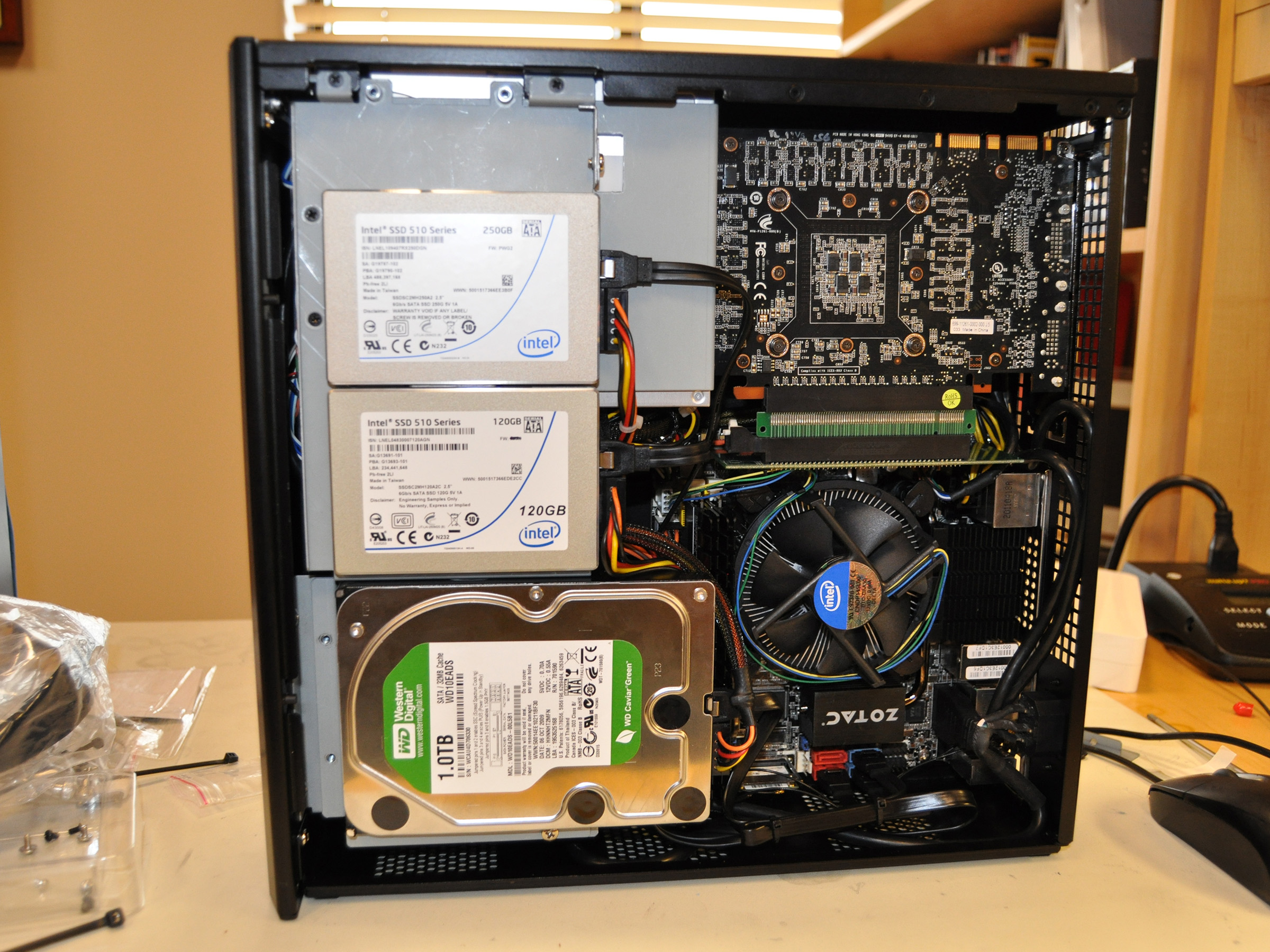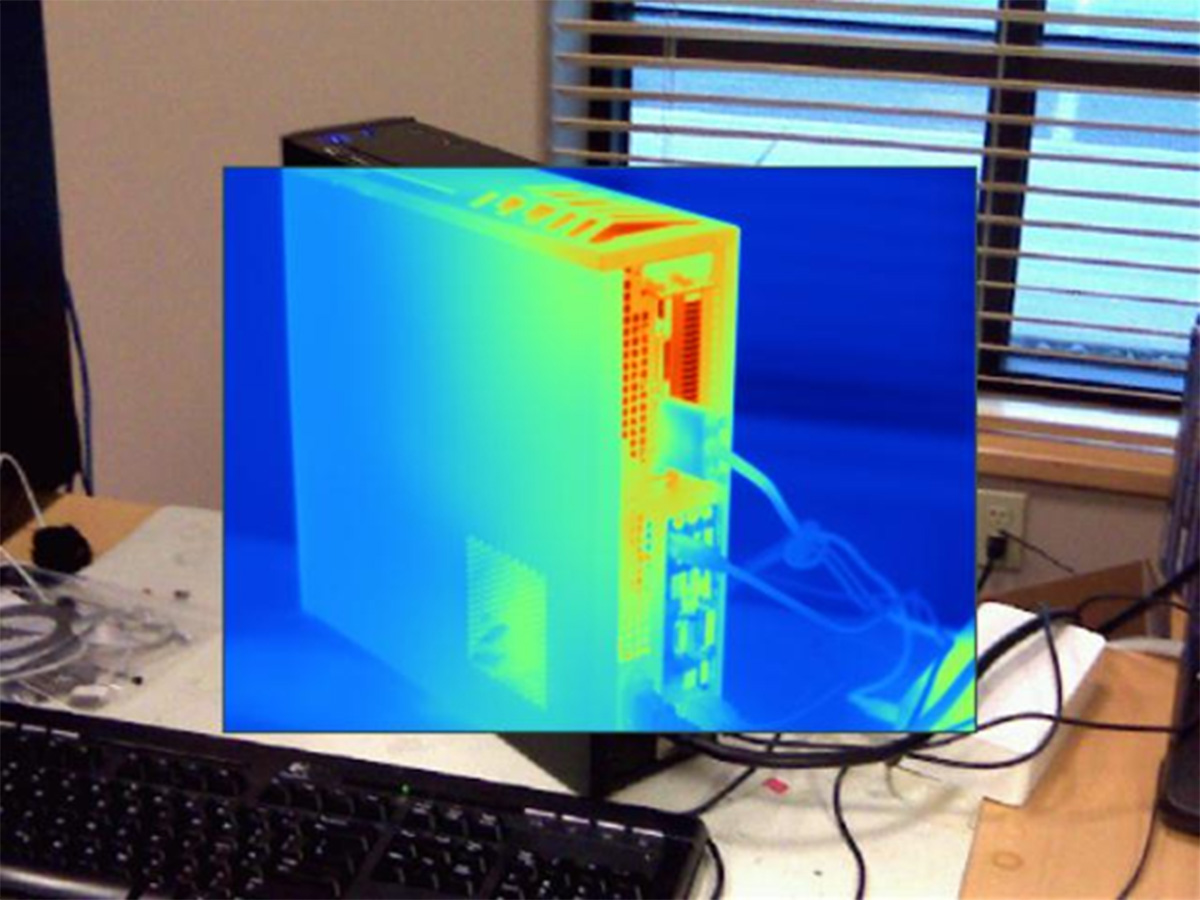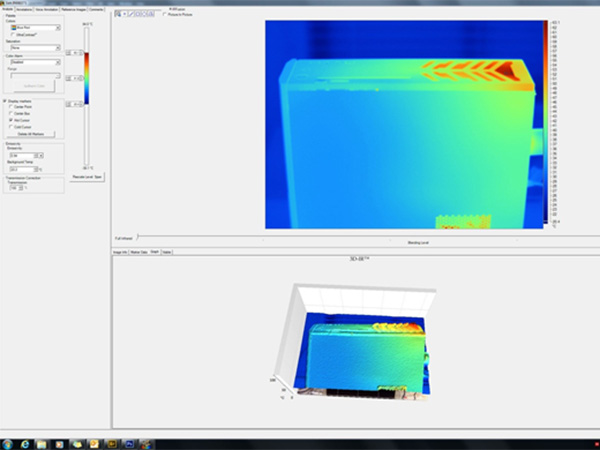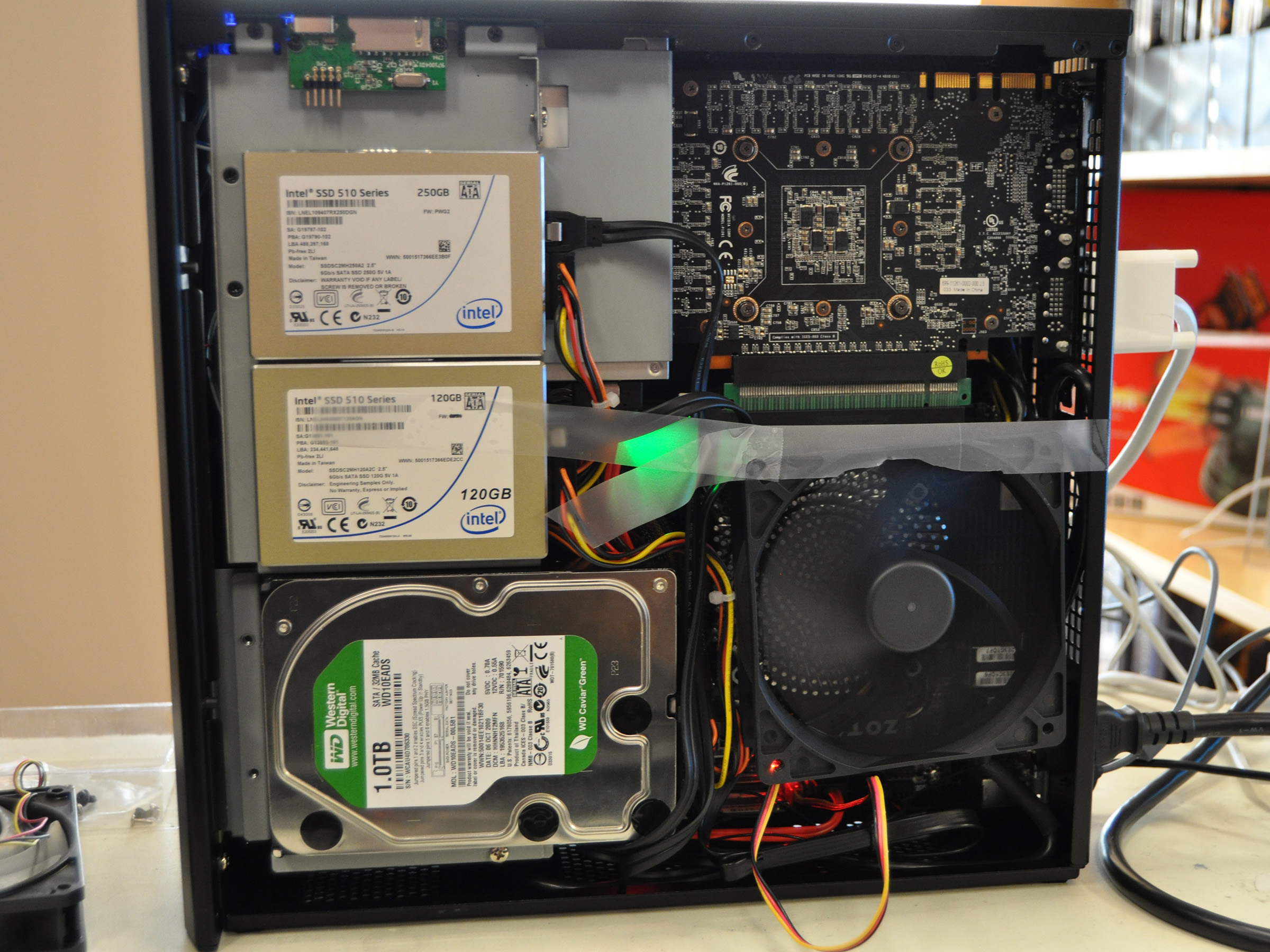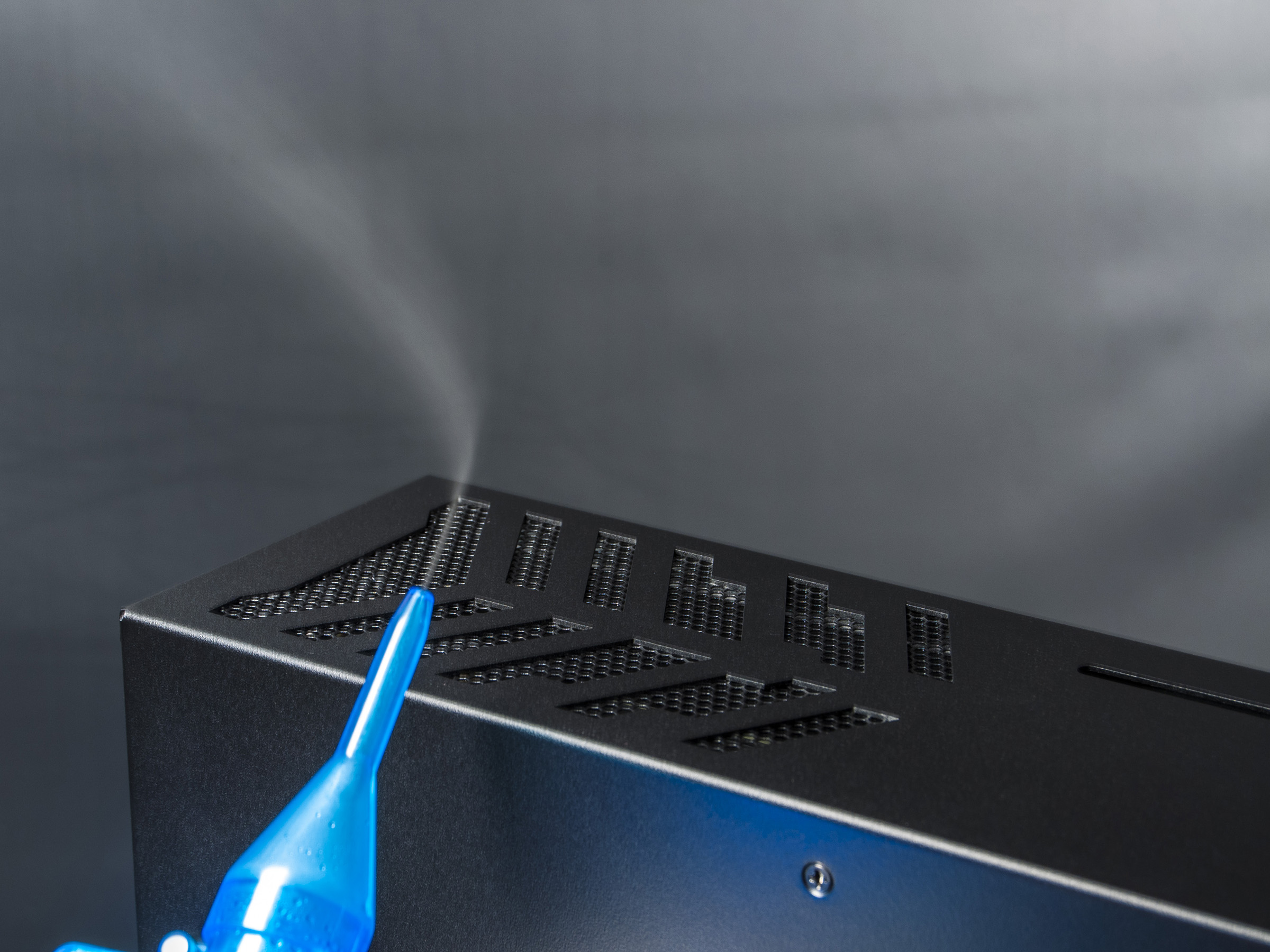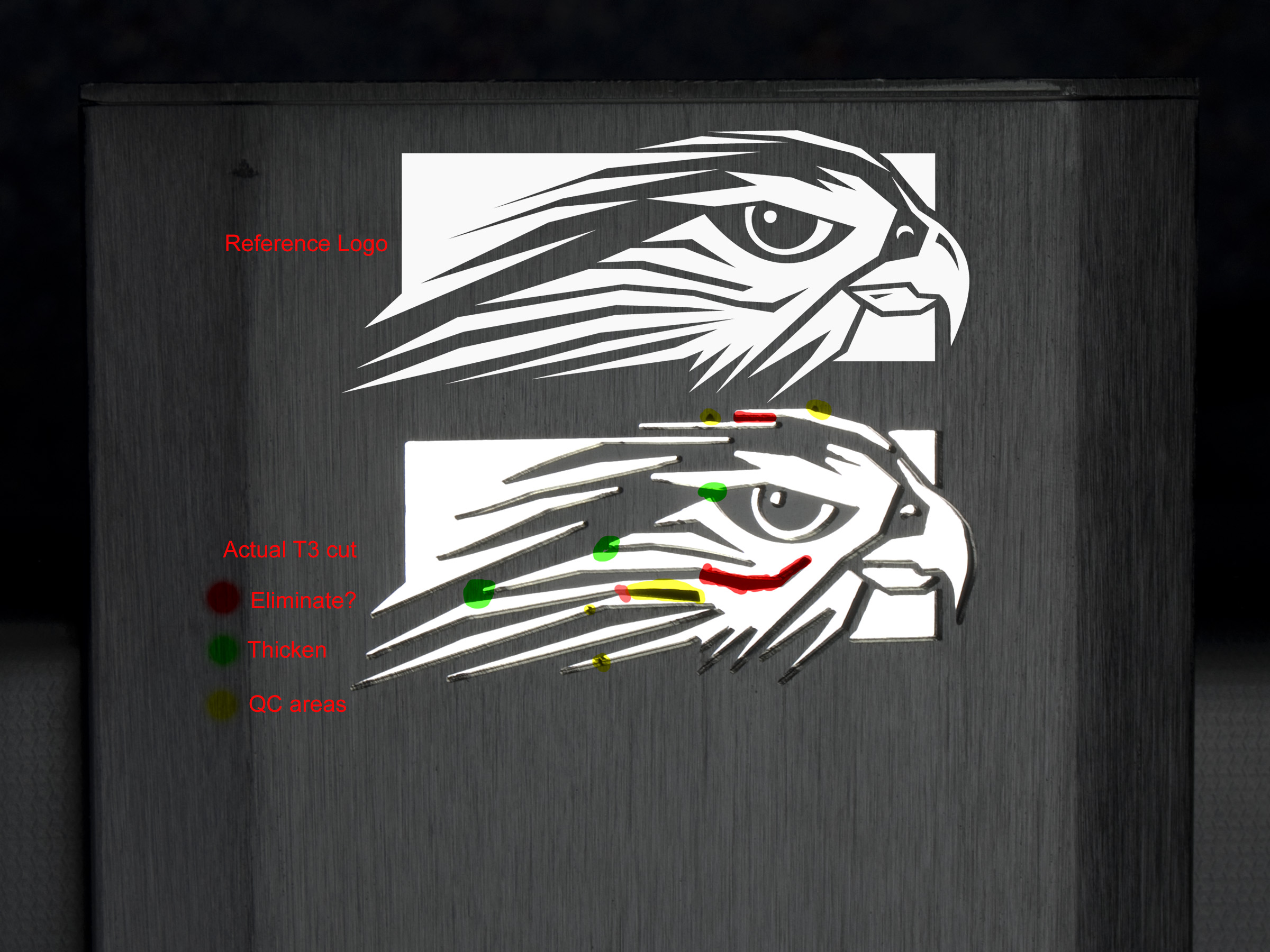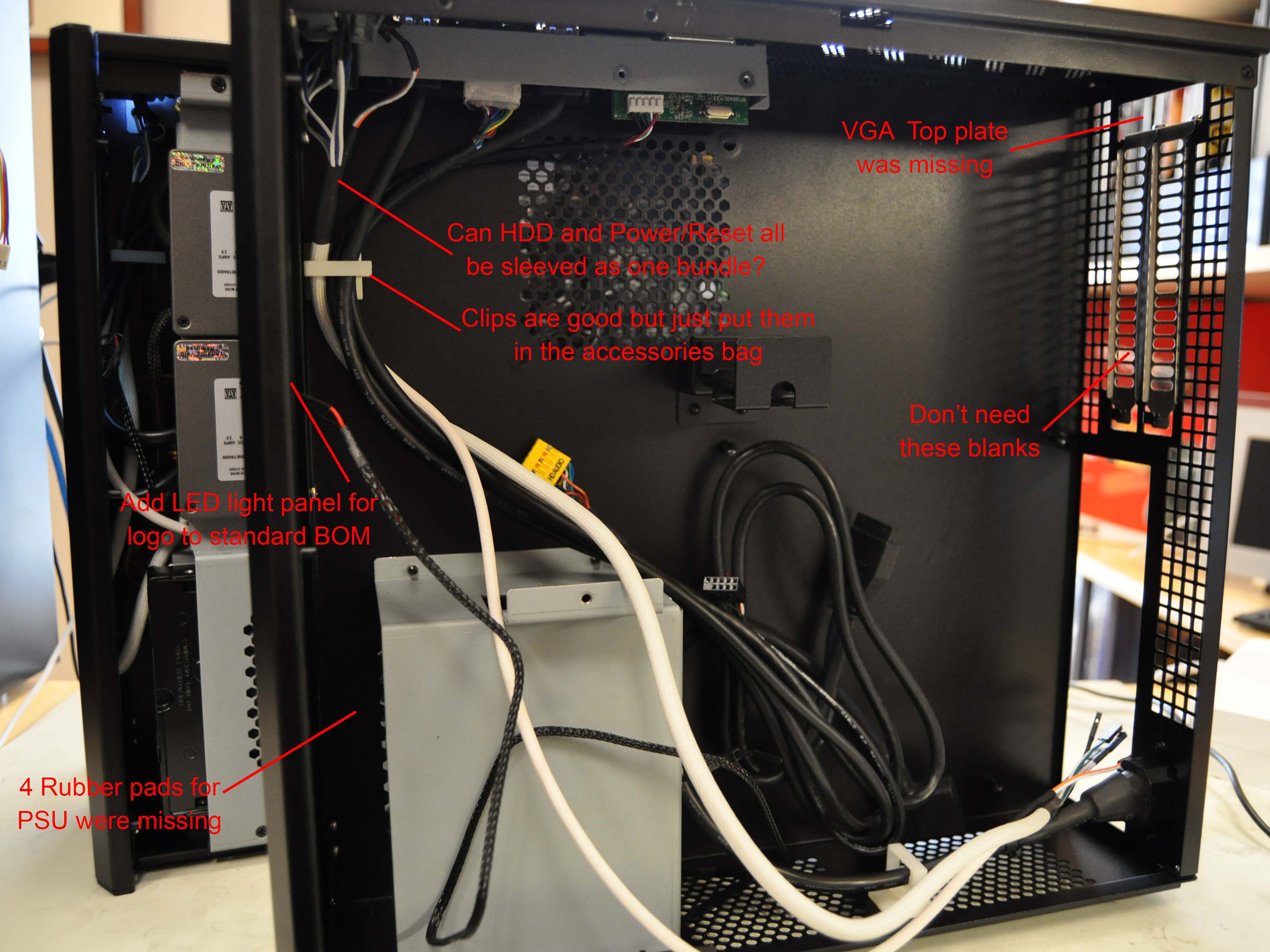Meet The Tiki: Core i7-3770K And GeForce GTX 680 In A Mini-ITX Box?
Falcon Northwest sent us a mini-ITX-based platform worthy of enthusiast lust. We asked the company's president, Kelt Reeves, to walk us through the process of designing a tiny desktop packing more performance than most power user-oriented rigs.
Prototype 2’s First Build Goes Smoothly
At this point, we anticipated that Tiki would employ an air-cooled CPU, and we were testing with a still power-hungry GeForce GTX 580. The only enthusiast-oriented mini-ITX board that fit our needs was a Zotac platform. But at least one existed! The basic build went together really well. It was time to start sweating the details.
Nitpicking Everything
I’m a bit of a perfectionist, so this is where things started getting very annoying for our manufacturing partners. We can’t provide a perfect product unless we demand perfection from our suppliers. My goal on the prototypes was to find every possible manufacturing defect, design flaw, sloppy tolerance, and cosmetic issue. This resulted in a long PowerPoint-based bug-list for manufacturing essentially saying “Great job! Now, here are 50 things that need fixing.”
But How Well Does It Work?
Once we knew that Tiki would hold the components we wanted in the dimensions we specified, it was time for a little analysis. How well would our case actually work? It’s not enough to look pretty and have screw holes in all of the right places. Cramming high-end hardware into a tiny space is a recipe for a cooling nightmare.
The chassis is only 100 mm-wide. A standard cooling fan is 120 mm wide and 25 mm deep. How would our CAD model hold up when we fired up the (then) fastest Sandy Bridge-based CPU, three hard drives, and a GeForce GTX 580? Would our goal of creating a powerful, yet quiet, system be shattered by the need for noisy cooling fans? You just can’t model an airflow/cooling system this complex in CAD. You just have to build it and try it.
When You Want To See Heat, Use Predator-Vision
Our thermal imaging camera and software both confirmed that our design was sending heat where we wanted it to go—out the top and rear of the chassis—and that we were getting some exhaust blowback in a few areas. Also, the 80 mm fan vent over the CPU was adequate. If only we had room for a 120 mm fan in there! A 120 mm fan would have pushed more air and generated less noise than an 80 mm fan.
Scotch Tape FTW!
A 120 mm cooling fan over the CPU would’ve been the best choice for the most airflow and least noise. It just wouldn’t fit. At least, it didn’t fit in the 3D models. But, over and over, I discovered that there were millimeters of available space everywhere if you used the right parts installed in the right order. So, through the cunning application of Scotch tape, we bent the laws of physics and crammed a 120 mm fan on the side.
Just because HAL the CAD program says, “Sorry, I can’t do that Dave,” doesn’t mean it’s not worth trying.
Get Tom's Hardware's best news and in-depth reviews, straight to your inbox.
Testing Airflow
Thermal imaging can tell you what’s getting hot, but it doesn’t help visualize airflow. Is our top vent getting hot because of the graphics card under it, or are we actually getting the vertical exhaust we intended? For that, you need smoke testing. We use a smoke generator that looks like it’d require a medical marijuana card to own, and passers-by my office wonder why smoke drifts out of it like Cheech and Chong’s van. I swear, it’s just superheated mineral oil. Back off, man. I’m a scientist.
Frickin’ Laser Beams!
Industrial lasers are used to cut a lot of the complex shapes in our metal cases, which is cool. What’s not cool is that the heat they generate is so intense that it actually melts the metal in the smaller cutouts. Tiki’s laser-cut fan grills were melting just a bit. In fact, they slightly bowed in, so the grill would rub on the fan’s hub and make noise or stop the fan altogether.
Fixing that was easy compared to the complexity of creating the backlit Falcon logo in the case’s aluminum front. Of course, we could’ve just painted the logo instead. But that would’ve been way less cool. And Tiki had to be cool.
Notice that Tiki had a brushed finish on its aluminum faceplate. We changed that to match the sand-blasted finish on our other products. It’s more expensive, but it doesn’t show fingerprints as easily and it looks nicer.
The Drive Plate
I have to call out the amazing work of a designer named Ellis, who created this deceptively-simple component. This single piece of metal holds an optical drive, two 2.5” solid-state drives, and a full-sized 3.5” disk. There are 12 different folds in this piece of metal going six different directions, including one Z-shaped bend only 2 mm-high!
Prototypes 3 And 4
Five more months were spent tweaking details after the second prototype arrived. Getting it right required two more physical prototypes, and even a few un-prototyped changes that technically made the production units physical version number five.
I got really sucked into the details, and Tiki turned out to be my most involved case project ever. I drove a few of our suppliers crazy, though, as there’s much more to a chassis than just the metal.
Trying Them Out, One By One
Heat sink and fan vendors also received a full dose of my obsessive testing and endless evaluation requests.
It turns out that, even with a chassis sporting intake and exhaust vents exactly where they need to be, getting sufficient air in and out of the system without causing a racket is a major hurdle. On Tiki, specifically, it became an obsession. I tested an enormous number of fans and heat sinks, and they’re still piled up in my office. I need to clean that up sometime.
Tom's Hardware is the leading destination for hardcore computer enthusiasts. We cover everything from processors to 3D printers, single-board computers, SSDs and high-end gaming rigs, empowering readers to make the most of the tech they love, keep up on the latest developments and buy the right gear. Our staff has more than 100 years of combined experience covering news, solving tech problems and reviewing components and systems.
-
freggo I usually do not bother with these 30+ page click stories. They are a pain in the arse.Reply
But.. that story just was too interesting, almost like a crime novel...
Just one more click and I stop.... ok, jut ONE more.
Anyway, it was interesting to see the painful birth of what seems to be a very interesting product; also I don't even want to guess how much $$$ we are talking all things considered.
Still, very interesting and impressive. Would love to see THG do a test, especially the noise part would interest me. I HATE noise and am willing to pay xtra for $ilence :-)
-
Robert Pankiw http://build.falcon-nw.com/Reply
I posted a really nice and long comment that magically got erased.. Basically, it is around 2500 USD for (what I assume) is the shown model (i7, 2 128GB SSDs + HDD, GTX 680 2GB) but for a nice system (i5, 1 256GB SSD, GTX 670) it is 2045 USD. -
s3anister ReplyTiki is our first product that literally could not be built by anyone but an enthusiast.
From reading your article I most definitely agree with you. Quite an amazing build.
And if you still need to get rid of some fans and heatsinks I'd be more than happy to take a few off your hands :D -
xaed Robert Pankiwhttp://build.falcon-nw.com/I posted a really nice and long comment that magically got erased.. Basically, it is around 2500 USD for (what I assume) is the shown model (i7, 2 128GB SSDs + HDD, GTX 680 2GB) but for a nice system (i5, 1 256GB SSD, GTX 670) it is 2045 USD.Reply
All things considered, that extra $500 (I'm thinking it's more assuming they get their parts at OEM rates) isn't THAT bad. -
abhijitkalyane Wow! Just WOW! This is awesome. This is a top of the line build but barely the size of an XBox. Amazing.Reply -
dakkon Toms please do a bench on this thing... Please Please Please... and Mr Falcon CEO Kudos to you, now give the damed machine to Toms and let them Bench it. :)Reply -
Darkerson Very interesting, both the article and the end result product. Would love to see some benchmarks when it is released.Reply -
Menigmand I love a small, quiet pc, but the biggest problem is not the actual size. The main aesthetic problem is that a pc setup will still include a monitor and plenty of wires, a keyboard and a mouse. Having a pc in a small livingroom tends to "take over" the space and make it seem a bit like an office.Reply
That's why I like to game on a laptop, even though I get less graphics performance, the kit can always be folded up and put in the cupboard when I have guests over and need the dining table.
